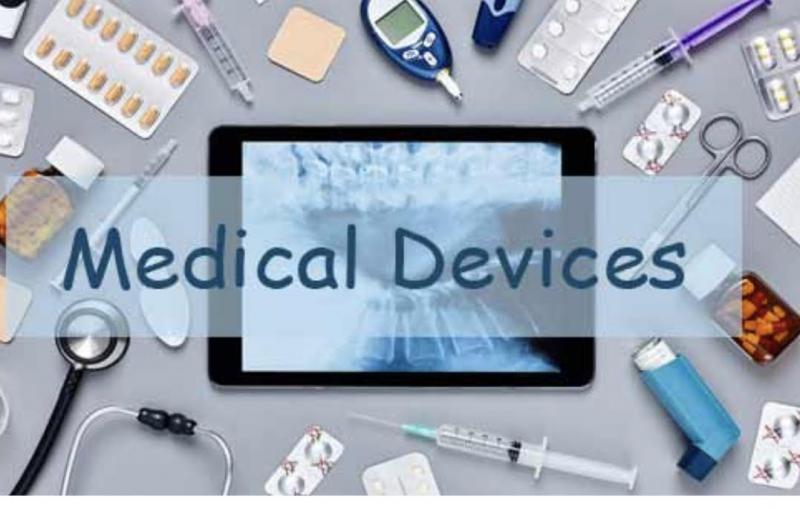The Rapidly Evolving Field of Medical Technology
The medical devices industry has witnessed exponential growth and innovation over the past few decades. Advanced technologies such as robotics, artificial intelligence, 3D printing and bioelectronics are revolutionizing the fields of diagnosis, treatment and patient care. New startups are continuously launching exciting new products to address unmet clinical needs. Established companies are investing heavily in R&D to develop minimally invasive tools and personalized solutions. The COVID-19 pandemic has further accelerated digital transformation across the healthcare continuum. Remote monitoring devices, diagnostic kits and ventilators saw unprecedented demand globally. Going forward, the confluence of various disruptive technologies is expected to transform how medical devices are designed, manufactured and delivered. In this article, we will explore some of the prominent segments in the medical devices market and discuss the factors driving continued innovation.
Innovations in Diagnostic Imaging
Diagnostic imaging has become an integral part of clinical decision making today. Advanced imaging modalities like CT, MRI, ultrasound and PET are providing more detailed anatomical and functional information than ever before. This is enabling earlier disease detection as well as guided procedures. Startups are developing novel contrast agents, reconstruction algorithms and image analysis tools to enhance diagnostic accuracy. Meanwhile, tier 1 players are focusing onminiaturizing imaging systemsand combining modalities. They are leveraging AI to automate image interpretation and flag incidental findings. Portable ultrasound devices and smartphone-connected attachmentshave vastly expanded the applications of imaging beyond hospitals. Wearable sensors and "smart patches" that canperform multiparameter imagingare also emerging.
Advancements in Surgical Robotics
Robotic systems are playing an increasing role in minimally invasive surgeries like urology, gynecology and general procedures. Their dexterity, magnified 3D views and ability to filter hand tremors are making complex operations safer and more reproducible. Newer generations of robotic platformsprovide enhanced joint mobility, instrumentation and autonomous assistance. Companies are integrating AI, haptics and augmented reality capabilities as well. Laparoscopic robots can now suture tissues, perform sentinel node biopsies and assist in multi-quadrant abdominal procedures. Robot-assisted cardiac surgery is also gaining ground. Researchers are working on micro-robots that can bedeployed intravascularlyusing magnetic actuation. In the future, swarms of cooperative nanobots may enable repairs at the cellular level.
Novel Implantable and Bioelectronic Devices
The fields of neural engineering and bioelectronics are producingdisruptive class of implantable devices. Brain-computer interfaces based on intracortical microelectrodes allow communicating and controlling external devices via thought alone in late stage clinical trials. Glucose-sensing contact lenses and injectable biosensorsopen upnew frontiers in continuousmonitoring.Pacemakers, spinal stimulators and cochlear implants have transformed the lives of millions worldwide. Now, implantable pumps areaddressing various chronic conditionsranging from Parkinson's and epilepsy to heart failure and diabetes. Bioelectronics startupshavedeveloped soft wireless devices that can restore hearing, vision, muscle function as well as treat gut disorders, mood conditions and chronic pain through minimally invasive nerve stimulation. These futuristic technologies aim to dramatically improve quality of life.
Advancement in Materials, Manufacturing and Supply Chain
Significant engineering efforts are focused on developing innovative biocompatible materials as well as manufacturing processes that improve performance of devices while ensuring safe, cost-effective production at scale. 3D printing techniques are reducing production turnaround times and waste from tooling. They enable customized devices, complex porous implants as well as instruments with integrated electronics, sensing and drug elution capabilities. Advancements in polymer and ceramic formulationshave expanded applications to load-bearing joints. Anti-microbial coatings are addressing challenges like device-related infection. Meanwhile, an optimized supply chainwith digitally integrated planning, procurement and logistics is helping lower logistical hurdles across diverse geographies. Demandforecasting and inventory optimizationtools along with blockchain enabled serialization and tracking are further enhancing supply chain resilience worldwide.
Revenue Streams Expand Beyond Traditional Device Sales
Established medtech companies are seeking new sustainable business models beyond upfront device sales as technologies become commoditized and pricing pressures rise. They are increasingly partnering with providers through outcome-based contracts that reimburse based on clinical performance targets or value-based pricinglinked to quality-adjusted life years. Digital health platforms allow remote monitoring, predictive maintenance, multi-device data aggregation and software upgrades that generate recurring revenue streams. As technologies advance, the line between drugs and devices will blur further with drug-device combinations, cellular therapies and gene modification techniques. This will requireforging strategic alliances across domains. Overall, the medical devices market is evolving into a data-driven, patient-centered "medical physics" industry of the future with diversified revenue streams and new competitive dynamics.
The Future Looks Bright with Continued Growth Opportunities
The medical devices market promises strong continued growth driven by aging demographics, increasing chronic disease burden and demand for improved quality of life in developed and emerging economies alike. Global healthcare expenditures are projected to double to over $18 trillion by 2040. Innovations to address cardiovascular, neurological, orthopedic, oncological as well as general medical conditions present multi-billion dollar commercial opportunities. Developing user-friendly home healthcare products, digital therapeutics, as well as AI/virtual tools for therapeutics and monitoring will be key growth areas. Adoption of disruptive automation, 3D printing and personalized approaches will drive margins. Partnerships with pharma, service providers and payers will unlock synergies while managing regulatory complexities. Overall, the future remains vivid for venture investment and M&A in this thriving sector focused on improving human health through cutting-edge technologies.
